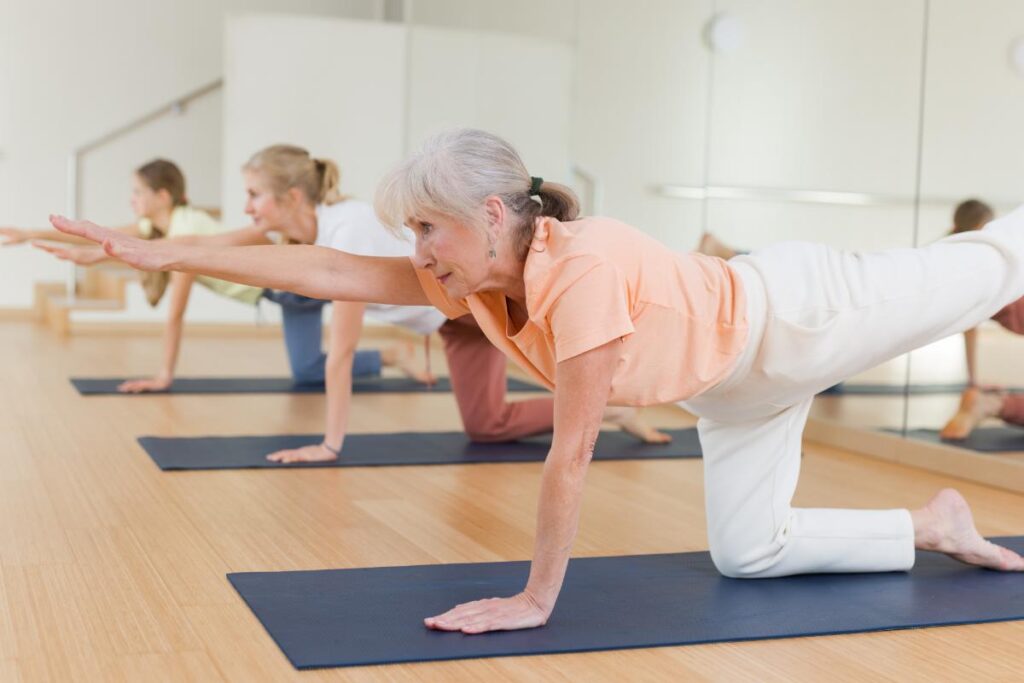
Chronic pain can be a debilitating condition that affects every aspect of one's life. However, there is hope for relief through the practice of yoga.
In this article, we will explore 12 powerful yoga poses specifically designed to alleviate chronic pain. These poses have been carefully selected based on their ability to target and release tension in the body, promoting healing and restoring balance.
Whether you are a yoga enthusiast or new to the practice, these poses offer a path towards freedom from chronic pain.
Corpse Pose
The Corpse Pose, also known as Savasana, is the final and most relaxing pose in a yoga practice. It is a posture that involves lying flat on your back with your legs extended and your arms relaxed by your sides.
The benefits of relaxation offered by the Corpse Pose are numerous. This pose allows the body to fully release tension, promoting deep relaxation and reducing stress levels. It also helps to calm the mind, allowing for mental clarity and improved focus.
In addition to its basic form, there are variations of the corpse pose that can be explored. These variations include using props such as bolsters or blankets to support the body, or incorporating gentle movements or breathing techniques to enhance the relaxation experience.
Whether practiced in its traditional form or with variations, the Corpse Pose is a powerful tool for achieving deep relaxation and finding inner peace.

Child's Pose
Continuing the exploration of yoga poses that alleviate chronic pain, let us now delve into the benefits of Child's Pose.
Child's Pose, also known as Balasana, is a gentle and restorative pose that provides a sense of grounding and relaxation. It is particularly beneficial for those suffering from chronic pain as it helps to release tension in the back, shoulders, and neck.
Some variations of Child's Pose include:
- Wide-Knee Child's Pose: This variation involves spreading the knees wider apart, allowing for a deeper stretch in the hips and lower back.
- Extended Child's Pose: In this variation, the arms are extended forward, lengthening the spine and providing a gentle stretch to the shoulders and upper back.
- Supported Child's Pose: By placing a bolster or folded blanket under the torso, this variation provides additional support and allows for a more comfortable and restorative experience.
To ensure proper alignment in Child's Pose, remember to:
- Keep the knees hip-width apart or wider, allowing for a comfortable stretch.
- Lengthen the spine and reach the tailbone towards the heels to maintain a neutral spine.
- Rest the forehead on the mat or a block, allowing for relaxation and release of tension in the neck and shoulders.
Child's Pose is a powerful and accessible pose that can be modified to suit individual needs, making it an ideal choice for those seeking relief from chronic pain.
Cat-Cow Pose
Transitioning from Child's Pose, another powerful yoga pose that can alleviate chronic pain is the Cat-Cow Pose.
The Cat-Cow Pose is a gentle and flowing movement that helps to stretch and mobilize the spine, relieving tension and promoting flexibility. This pose involves moving between two positions: the Cat pose and the Cow pose.
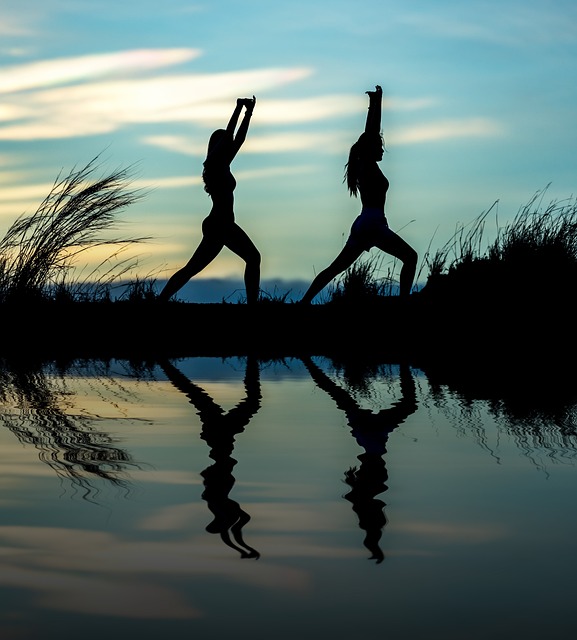
In the Cat pose, you round your spine and tuck your chin towards your chest, resembling a cat stretching its back. Then, in the Cow pose, you arch your back and lift your chest and tailbone towards the ceiling, resembling a cow's gentle stretch.
These movements can be modified to suit different body types and abilities. Variations of the Cat-Cow Pose include using props such as blocks or blankets for support, or even incorporating gentle twists and side stretches to further enhance the benefits.
Standing Forward Bend
To delve into the benefits of alleviating chronic pain through yoga, we now explore the Standing Forward Bend pose. This pose, also known as Uttanasana, is a powerful posture that provides numerous benefits for both the body and mind.
- Improved flexibility: Standing Forward Bend stretches the hamstrings, calves, and hips, promoting greater flexibility and range of motion in these areas.
- Reduced tension: This pose helps release tension in the neck, shoulders, and back, relieving chronic pain caused by stress or poor posture.
- Calming effect: Standing Forward Bend has a calming effect on the nervous system, reducing anxiety and promoting a sense of peace and relaxation.
Modifications for Standing Forward Bend can be made to accommodate individuals with specific needs. Those with tight hamstrings can bend their knees slightly or use props such as blocks to support their hands. Individuals with lower back pain can perform the pose with their hands resting on a chair or against a wall for added support.
Bridge Pose
How can the Bridge Pose help alleviate chronic pain?
The Bridge Pose, also known as Setu Bandhasana, is a powerful yoga posture that can provide relief from chronic pain. This pose is known for its ability to strengthen the back, stretch the spine, and open the chest.
By practicing the Bridge Pose regularly, individuals can experience a reduction in lower back pain, alleviate stress and anxiety, and improve overall flexibility. Variations of this pose, such as the supported Bridge Pose using props, can provide additional benefits for those with limited mobility or injuries.
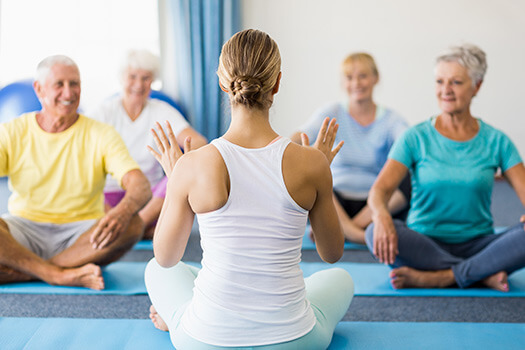
To practice the Bridge Pose safely, it is important to engage the core muscles, maintain proper alignment, and listen to your body's limits. As with any yoga pose, it is recommended to seek guidance from a qualified yoga instructor to ensure proper form and prevent injury.
Triangle Pose
Triangle Pose, also known as Trikonasana, is a powerful yoga pose that offers numerous benefits for those suffering from chronic pain. This pose helps to stretch and strengthen the legs, hips, and spine, while also improving balance and stability.
Additionally, Triangle Pose can be modified to accommodate different levels of flexibility, making it accessible to individuals of all abilities.
Benefits of Triangle Pose
The Triangle Pose offers a range of therapeutic benefits that can help alleviate chronic pain. This powerful yoga pose not only stretches and strengthens the muscles in the legs and hips but also helps improve balance, posture, and flexibility.
Here are some key benefits of practicing Triangle Pose:
- Improved spinal health: Triangle Pose helps to lengthen and stretch the spine, thereby relieving tension and promoting better alignment. However, it is important to take precautions for spinal health, such as avoiding excessive twisting or bending and engaging the core muscles to support the spine.
- Modifications for beginners: For those new to yoga or with limited flexibility, modifications can be made to make Triangle Pose more accessible. This may include using a block under the hand for support or bending the knee slightly to reduce strain on the hips and hamstrings.
- Overall pain relief: By stretching and strengthening the muscles, Triangle Pose can help alleviate chronic pain in the lower back, hips, and legs. It also helps improve circulation and release tension in the body, leading to an overall sense of freedom and well-being.
Incorporating Triangle Pose into your yoga practice can be a powerful tool for managing chronic pain and promoting a healthier body and mind.
Modifications for Triangle Pose
Modifications can be made to make Triangle Pose more accessible for practitioners of all levels.

Triangle Pose, or Trikonasana, is a powerful standing pose that stretches and strengthens the entire body. However, not everyone has the same body type or level of flexibility, which is why it is important to offer modifications that cater to different needs.
For those with limited flexibility, using a block can provide support and help maintain proper alignment. Placing the block under the bottom hand can bring the ground closer and reduce strain on the hamstrings and lower back. Another modification is to bend the front knee slightly to alleviate pressure on the hips and make the pose more comfortable.
Advanced practitioners can explore variations of Triangle Pose to deepen their practice. They can try binding the top arm behind the back or reaching the bottom arm overhead to intensify the stretch and challenge their balance.
Seated Forward Bend
One highly effective yoga pose for alleviating chronic pain is the seated forward bend. This pose, also known as Paschimottanasana, stretches the entire back of the body, including the hamstrings, calves, and spine. It is particularly beneficial for individuals suffering from lower back pain, sciatica, and tight hips.
To ensure maximum benefit and safety, proper alignment is crucial in the seated forward bend. It is important to keep the spine long and straight, with the shoulders relaxed and away from the ears. Engaging the core muscles can help maintain stability and prevent strain on the lower back.
Incorporating breathing techniques can also enhance the effectiveness of the pose. Taking deep breaths in and out can help relax the body and allow for a deeper stretch. Exhaling as you fold forward can release tension and encourage a greater release in the muscles.
Reclining Twist
The Reclining Twist is a powerful yoga pose that offers numerous benefits for alleviating chronic pain. Twisting poses help to improve spinal mobility, release tension in the back muscles, and promote a healthy range of motion.
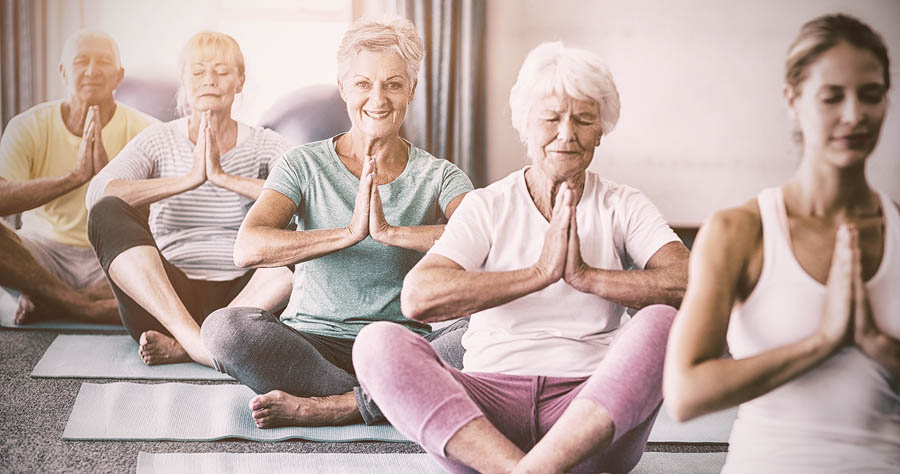
For beginners, modifications such as using props or starting with gentle twists can be implemented to ensure safety and comfort. It is important to approach this pose with caution and avoid excessive twisting if you have any pre-existing spinal conditions or injuries.
Benefits of Twisting
Twisting poses, such as the reclining twist, are frequently beneficial for alleviating chronic pain through their ability to release tension and improve spinal mobility. These poses not only provide relief from pain but also offer several other benefits that contribute to overall well-being.
Here are some of the key benefits of twisting:
- Twisting for digestion: Twisting poses stimulate the digestive system, helping to improve digestion and relieve digestive issues such as bloating and constipation. By gently compressing and massaging the organs in the abdomen, twisting poses enhance the functioning of the digestive tract, promoting a healthy gut.
- Twisting for detoxification: Twisting poses are known to aid in detoxification by stimulating the lymphatic system and promoting the elimination of toxins from the body. The twisting motion helps to wring out the internal organs, enhancing their detoxification process and improving overall body function.
- Improved spinal mobility: Twisting poses help to increase the flexibility and mobility of the spine. As we age, the spine tends to lose its flexibility, leading to stiffness and discomfort. Twisting poses help to counteract this by stretching and releasing tension in the muscles and ligaments surrounding the spine, promoting a healthy range of motion.
Modifications for Beginners
To cater to beginners, there are several modifications that can be made to the reclining twist pose, building upon the benefits discussed in the previous section. This beginner-friendly modification allows individuals to experience the benefits of the pose without unnecessary strain or discomfort.
One common mistake to avoid is forcing the twist too far. Beginners should start with a gentle twist, gradually deepening it as their flexibility improves. Placing a bolster or folded blanket under the knees can provide additional support and prevent strain on the lower back.
Another modification is to keep the knees bent and feet flat on the mat. This variation reduces the intensity of the twist and makes it more accessible for beginners. Additionally, using props such as blocks or pillows to support the knees or head can enhance comfort and relaxation during the pose.
Precautions for Spinal Health
In order to maintain optimal spinal health during the reclining twist pose, it is crucial to follow certain precautions. This pose can be highly beneficial for relieving chronic pain, but it is important to prioritize your spinal alignment and prevent any potential back injuries. Here are some precautions to keep in mind:

- Warm-up: Always warm up your body before attempting any yoga pose, especially one involving a spinal twist. This helps to prepare your muscles and joints for the movement.
- Gentle Twist: Start with a gentle twist and gradually increase the intensity as your body becomes more flexible and accustomed to the pose. Avoid forcing the twist, as this can strain your back and cause injuries.
- Modifications: If you have any existing back injuries or conditions, consult with a qualified yoga instructor who can provide modifications to ensure your safety and prevent further damage.
Extended Triangle Pose
Extended Triangle Pose, also known as Utthita Trikonasana in Sanskrit, is an effective asana for alleviating chronic pain. This pose stretches and strengthens the entire body, providing relief from pain and discomfort.
To perform this pose, stand with your feet wide apart and extend your arms parallel to the ground. Engage your core and slowly bend sideways, reaching one hand down towards your shin or ankle while extending the other arm upwards towards the sky.
To modify this pose, you can use a block or a chair for support. The Extended Triangle Pose helps to stretch the hips, hamstrings, and shoulders, while also improving balance and posture.
For individuals experiencing chronic pain, incorporating a few rounds of the Extended Triangle Pose into their yoga practice can provide much-needed relief. When done correctly, this pose can help release tension and promote a sense of freedom in the body.
To further enhance the benefits, it is recommended to follow up with Child's Pose, which provides a gentle stretch to the back and helps to relax the body and mind.
Pigeon Pose
Continuing the exploration of effective yoga poses for alleviating chronic pain, the next pose to be discussed is Pigeon Pose. This powerful pose targets the hips, glutes, and lower back, making it ideal for relieving pain in these areas.
Pigeon Pose can be modified or varied to suit individual needs and abilities. Here are three variations of Pigeon Pose that can be explored:
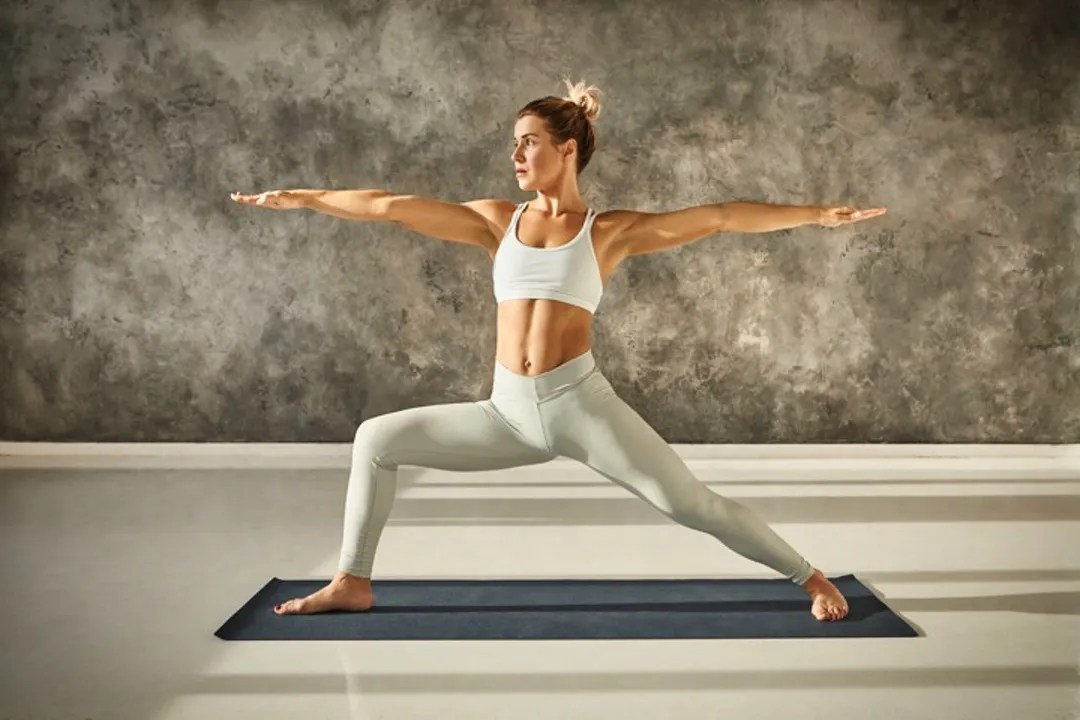
- Supported Pigeon Pose: This variation involves using props such as bolsters or blankets to support the body, allowing for a deeper release of tension and a more comfortable experience.
- Supine Pigeon Pose: In this variation, the practitioner lies on their back and brings one ankle to rest on the opposite knee, gently stretching the hips and glutes.
- Seated Pigeon Pose: This variation is done in a seated position, with one leg extended straight and the other leg bent, ankle resting on the thigh. This provides a gentle stretch to the hips and lower back.
Downward Facing Dog
Moving forward from the exploration of Pigeon Pose, an effective yoga pose for alleviating chronic pain, we now turn our attention to the powerful pose known as Downward Facing Dog.
Downward Facing Dog, or Adho Mukha Svanasana in Sanskrit, is a widely recognized and commonly practiced yoga pose that offers numerous benefits for both the mind and body. This pose is known for its ability to stretch and strengthen the entire body, while also providing a deep release for the spine and shoulders.
While Downward Facing Dog is a staple in many yoga classes, it is important to note that modifications and variations of this pose exist to cater to individual needs and abilities. For those with wrist pain or injury, practicing with the hands on blocks or fists can help alleviate discomfort. Additionally, placing a blanket under the heels can provide support and ease tension in the calves.
Exploring the variations of Downward Facing Dog can also offer a refreshing and dynamic approach to the pose. Three-Legged Downward Facing Dog, for example, involves lifting one leg high into the air, providing an extra stretch for the hamstrings and opening the hip of the lifted leg. Another variation is Dolphin Pose, where the forearms are placed on the ground instead of the hands, offering a deeper stretch for the shoulders and upper back.
By incorporating modifications and variations, practitioners can customize their Downward Facing Dog experience to suit their unique needs and preferences. Whether it is finding support for the wrists or exploring new ways to deepen the stretch, these adaptations allow for a more inclusive and fulfilling practice.
Cobra Pose
Cobra Pose offers significant benefits for individuals seeking relief from chronic pain. This powerful yoga posture helps stretch and strengthen the muscles in the back, neck, and shoulders, while also improving flexibility and posture.
Here are some modifications and variations for Cobra Pose:
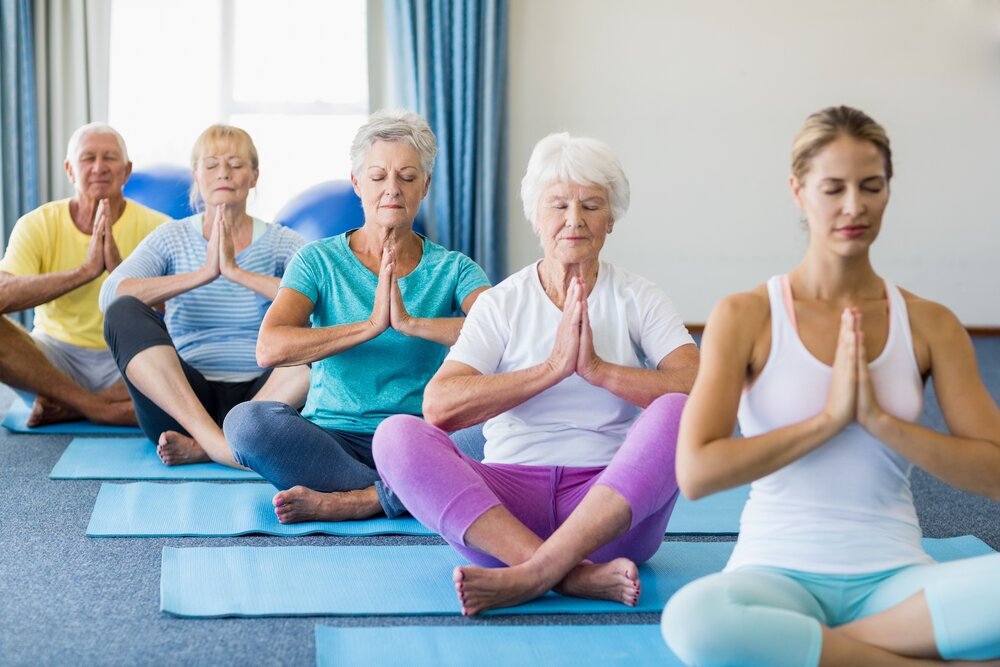
- Use props: Place a bolster or folded blanket under the pelvis for added support and to reduce strain on the lower back.
- Sphinx Pose: If Cobra Pose feels too intense, you can start with Sphinx Pose, where you rest on your forearms instead of fully extending your arms.
- Half Cobra Pose: For those with limited flexibility or back pain, you can try Half Cobra Pose by keeping the lower body on the mat and lifting only the chest and upper body.
Frequently Asked Questions
How Long Should I Hold Each Pose for Maximum Pain Relief?
To maximize pain relief, it is recommended to hold each yoga pose for at least 30 seconds. However, beginners can modify poses by reducing the duration, while advanced practitioners can deepen stretches by holding poses for longer periods.
Are These Poses Suitable for All Levels of Yoga Practitioners?
When considering the suitability of yoga poses for all levels of practitioners, it is important to offer beginner-friendly modifications for those new to yoga, as well as advanced variations for experienced practitioners seeking a greater challenge.
Can These Poses Help With Specific Types of Chronic Pain, Such as Lower Back Pain or Arthritis?
Yoga poses for specific types of chronic pain, such as lower back pain or arthritis, can be effective in alleviating symptoms and improving overall well-being. These poses target specific areas, provide pain relief, and promote flexibility and strength, making them suitable for chronic pain prevention.
Are There Any Modifications or Variations of These Poses for Individuals With Physical Limitations or Injuries?
Modifications for physical limitations and variations for injuries are essential in yoga practice to ensure the safety and comfort of individuals with specific needs. These adjustments allow practitioners to adapt poses and movements according to their unique circumstances and achieve optimal benefits.
Can Practicing These Poses Regularly Prevent the Recurrence of Chronic Pain in the Long Term?
Practicing yoga poses regularly can be an effective long-term pain management strategy, potentially preventing the recurrence of chronic pain. By improving flexibility, strength, and body awareness, yoga can promote proper alignment and reduce the risk of pain-inducing imbalances or injuries.
 Business & FinanceHealth & MedicineTechnologyLifestyle & CultureScience & EnvironmentWorld NewsPrivacy PolicyTerms And Conditions
Business & FinanceHealth & MedicineTechnologyLifestyle & CultureScience & EnvironmentWorld NewsPrivacy PolicyTerms And Conditions
